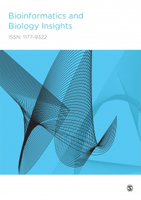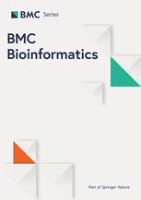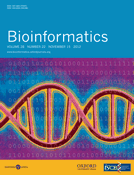
PLoS Computational Biology
metrics 2024
Unlocking Insights Through Computational Innovation
Introduction
PLoS Computational Biology is a premier open-access journal published by the Public Library of Science, committed to advancing the understanding of complex biological data through computational approaches. Since its inception in 2005, the journal has made significant strides in the fields of Cellular and Molecular Neuroscience, Computational Theory and Mathematics, Ecology, Genetics, and Molecular Biology, achieving a notable Q1 ranking in various categories as of 2023. With an exceptional impact factor and an esteemed ranking—such as Rank #23/176 in Computational Theory and Mathematics—PLoS Computational Biology provides a vital platform for researchers, professionals, and students to disseminate their cutting-edge findings and insights. The journal's open-access model ensures that high-quality research is freely accessible worldwide, fostering collaboration and innovation across disciplines. Located in San Francisco, CA, it serves as a hub for the global scientific community, making it an indispensable resource for anyone at the forefront of computational biology and its diverse applications.
Metrics 2024
 1.65
1.65 3.80
3.80 4.30
4.30 217
217Metrics History
Rank 2024
Scopus
IF (Web Of Science)
JCI (Web Of Science)
Quartile History
Similar Journals

Biophysics Reviews
Navigating the Frontiers of Biophysics and BiotechnologyBiophysics Reviews, published by AIP Publishing, is an emerging journal in the field of biophysics, aiming to bridge the gap between fundamental biophysical research and applied sciences. With an ISSN of 2688-4089, this journal provides a critical platform for the dissemination of high-quality reviews covering the interplay between biochemistry, molecular biology, biotechnology, and materials science. As of 2023, it provides essential insights for researchers and professionals interested in understanding biomolecular processes at a physical level. Although the journal is not currently open access, it is making strides in establishing its impact in the competitive landscape, as indicated by its Scopus rankings in various related fields, including biochemistry and bioengineering. With a focus on enhancing collaborations among scientists and practitioners, Biophysics Reviews is poised to become a vital resource for anyone looking to deepen their understanding of how biophysical principles can be applied to solve complex biological challenges.

CELLULAR AND MOLECULAR BIOLOGY
Fostering Novel Insights in Molecular ResearchCellular and Molecular Biology is a prominent academic journal published by C M B ASSOC, specializing in the dynamic fields of cellular and molecular biology. Established in 1977, this journal has consistently aimed to disseminate groundbreaking research that contributes to our understanding of biochemical processes, cell dynamics, and molecular mechanisms governing life. With its ISSN 0145-5680 and E-ISSN 1165-158X, the journal plays a vital role in the exchange of innovative ideas, evidenced by its coverage of research from 1977 to 2024. Although currently categorized in the Q4 quartile for major disciplines such as Biochemistry and Cell Biology, it is dedicated to fostering the development of the field by welcoming submissions that challenge the conventional understanding and lead to novel insights. Researchers and academics looking to contribute to or stay updated in the rapidly evolving landscape of molecular biology will find this journal a valuable resource for connecting with a global community of scientists.

COMPUTATIONAL BIOLOGY AND CHEMISTRY
Empowering Researchers to Navigate the Frontiers of Computational Biology and ChemistryCOMPUTATIONAL BIOLOGY AND CHEMISTRY is a distinguished academic journal published by Elsevier Science Ltd, focusing on the dynamic intersection of computational biology, biochemistry, and chemistry. With an ISSN of 1476-9271 and an E-ISSN of 1476-928X, this journal is committed to disseminating high-quality research that employs computational techniques to solve complex biological and chemical problems. As of 2023, the journal holds a substantial impact factor reflecting its significance and rigorous peer-review process, categorized in the Q2 quartile for both Computational Mathematics and Organic Chemistry, alongside Q3 classifications in Biochemistry and Structural Biology. With a continuous publication history spanning from 2003 to 2024, it serves as a critical resource for researchers, professionals, and students alike. The journal offers various open access options, ensuring that vital research findings are accessible to a global audience, further enhancing collaboration across disciplines. Engage with cutting-edge studies and contribute to the evolving landscape of computational methodologies in the life sciences through this esteemed publication.

Molecular Systems Biology
Driving Collaboration for Groundbreaking Biological AdvancesMolecular Systems Biology, published by SpringerNature, is a premier open access journal that has been a cornerstone in advancing the fields of biological science since its inception in 2005. With its ISSN 1744-4292, this journal exemplifies high scholarly standards, boasting an impressive suite of impact factors, including Q1 rankings across various disciplines such as Agricultural and Biological Sciences, Biochemistry, Genetics and Molecular Biology, and more, highlighting its significant contribution to the scientific community. The journal offers robust access options to facilitate innovative research dissemination, reaching a global audience while maintaining a commitment to fostering collaboration and dialogue among researchers, professionals, and students. With a focus on integrating quantitative approaches to biological systems, Molecular Systems Biology plays a vital role in addressing complex biological questions, paving the way for groundbreaking discoveries and advancements in healthcare, environmental sustainability, and functional genomics.

Algorithms for Molecular Biology
Bridging mathematics and biology for groundbreaking discoveries.Algorithms for Molecular Biology, published by BMC, is a premier Open Access journal dedicated to advancing the field of molecular biology through innovative computational methods. Since its inception in 2006, the journal has provided a vital platform for researchers to share their findings and methodologies, covering a diverse range of topics at the intersection of applied mathematics, computational theory, and molecular biology. With a notable impact factor reflected in its Scopus ranks, including a Q2 classification in both applied mathematics and computational theory, as well as Q3 in molecular and structural biology, the journal plays an essential role in this rapidly evolving discipline. The wide accessibility of articles published under the Open Access model ensures that research findings reach a global audience, fostering collaboration and innovation amongst scientists and professionals alike. As we look towards converging years from 2006 to 2024, Algorithms for Molecular Biology continues to uphold the highest standards of scientific integrity and excellence, reinforcing its status as a key resource for those engaged in the profound complexities of molecular biology.

JOURNAL OF COMPUTATIONAL BIOLOGY
Advancing the Frontiers of Biology through ComputationJOURNAL OF COMPUTATIONAL BIOLOGY, published by Mary Ann Liebert, Inc., serves as a premier platform for the dissemination of groundbreaking research at the intersection of biological sciences and computational methods. Established in 1994, this journal provides a valuable resource for researchers, professionals, and students interested in the evolving fields of computational mathematics and biology. With a commendable Q2 ranking in several pertinent categories such as Computational Mathematics and Modeling and Simulation, it emphasizes high-quality studies that propel understanding and innovation in these areas. Although the journal currently operates under traditional access options, it plays a crucial role in fostering scholarly communication and collaboration among a diverse audience, advancing knowledge in genetics, molecular biology, and beyond. The journal's continual evolution, with a commitment to publish until at least 2024, positions it as a critical resource in the fast-paced world of computational biology.

IEEE-ACM Transactions on Computational Biology and Bioinformatics
Advancing the Frontiers of Computational Biology and BioinformaticsIEEE-ACM Transactions on Computational Biology and Bioinformatics is a prestigious journal published by the IEEE Computer Society, focusing on the interdisciplinary field of computational biology and bioinformatics. Established in 2004, this journal has made significant strides in contributing to our understanding of complex biological systems through quantitative methods and computational techniques, and it spans a converged publication period through 2024. As a notable resource with an impact factor that positions it in the second quartile in the domains of Applied Mathematics, Biotechnology, and Genetics, it serves as an essential platform for researchers and professionals seeking to disseminate their findings to a global audience. The journal ranks impressively in Scopus, with Applied Mathematics holding a rank of #38 out of 635 (94th percentile) and Genetics at #86 out of 347 (75th percentile), highlighting its significant influence in the scientific community. While the journal is not open-access, it provides valuable insights and cutting-edge research that are crucial for advancing the fields of bioinformatics and computational biology, making it indispensable for students, researchers, and practitioners alike.

Bioinformatics and Biology Insights
Unlocking insights through innovative bioinformatics research.Bioinformatics and Biology Insights is a premier open-access journal dedicated to advancing the frontiers of bioinformatics and biology. Published by SAGE Publications Ltd, this journal is a leading platform for disseminating high-quality research that integrates computational methods with biological insights. Since its inception in 2007, the journal has garnered significant recognition, reflecting its commitment to excellence, as evidenced by its impressive impact factor and a strong presence across multiple quartiles in applied mathematics, biochemistry, and computational sciences. With a rank of Q1 in both Applied Mathematics and Computational Mathematics and various other notable rankings in related fields, it serves as an essential resource for researchers, professionals, and students seeking cutting-edge knowledge and innovations. The journal's open-access model ensures that findings are readily available, fostering collaboration and advancement in this dynamic field. Through its comprehensive scope and rigorous peer-review process, Bioinformatics and Biology Insights continues to play a pivotal role in shaping the future of biological research and computational methodologies.

BMC BIOINFORMATICS
Exploring New Dimensions in Bioinformatics and Beyond.BMC Bioinformatics is a leading open-access journal published by BMC, dedicated to the rapidly evolving field of bioinformatics. With its inception in 2000, the journal has established itself as an essential resource for researchers, professionals, and students alike, disseminating high-quality research that bridges the gap between biology and computational science. BMC Bioinformatics holds a reputable Q1 ranking in Applied Mathematics and Computer Science Applications, and a Q2 ranking in both Biochemistry and Structural Biology, reflecting its significant impact in these interdisciplinary fields. The journal's broad scope encompasses innovative methodologies, tools, and applications that drive progress in biological research through computational approaches. With open access since its inception, the journal ensures unrestricted availability of cutting-edge research findings, promoting knowledge sharing and collaboration in the global scientific community. As it continues to publish advancements up to 2024, BMC Bioinformatics remains a cornerstone for those seeking to enhance their understanding of bioinformatics and its vital role in modern science.

BIOINFORMATICS
Pioneering Insights in Biochemistry and Computational ScienceBIOINFORMATICS, published by Oxford University Press, is a leading journal in the realms of biochemistry, computational mathematics, and computer science, with a notable impact factor that underscores its significance in the field. Since its inception in 1985 and continuing through its expected convergence in 2024, the journal has maintained a prestigious reputation, proudly residing in the Q1 category across multiple disciplines, including molecular biology and statistics. With a Scopus ranking placing it within the top percentiles of its categories, BIOINFORMATICS serves as an essential platform for disseminating high-quality research that advances knowledge and innovation at the intersection of biology and computational sciences. This journal not only offers both subscription and open access options, ensuring wider availability of its cutting-edge research, but it has also become a crucial resource for researchers, professionals, and students aiming to stay at the forefront of bioinformatics and related fields. Explore the latest findings and trends that define the future of biological research through this esteemed publication, any inquiries regarding the journal can be directed to its offices located at Great Clarendon St, Oxford OX2 6DP, England.